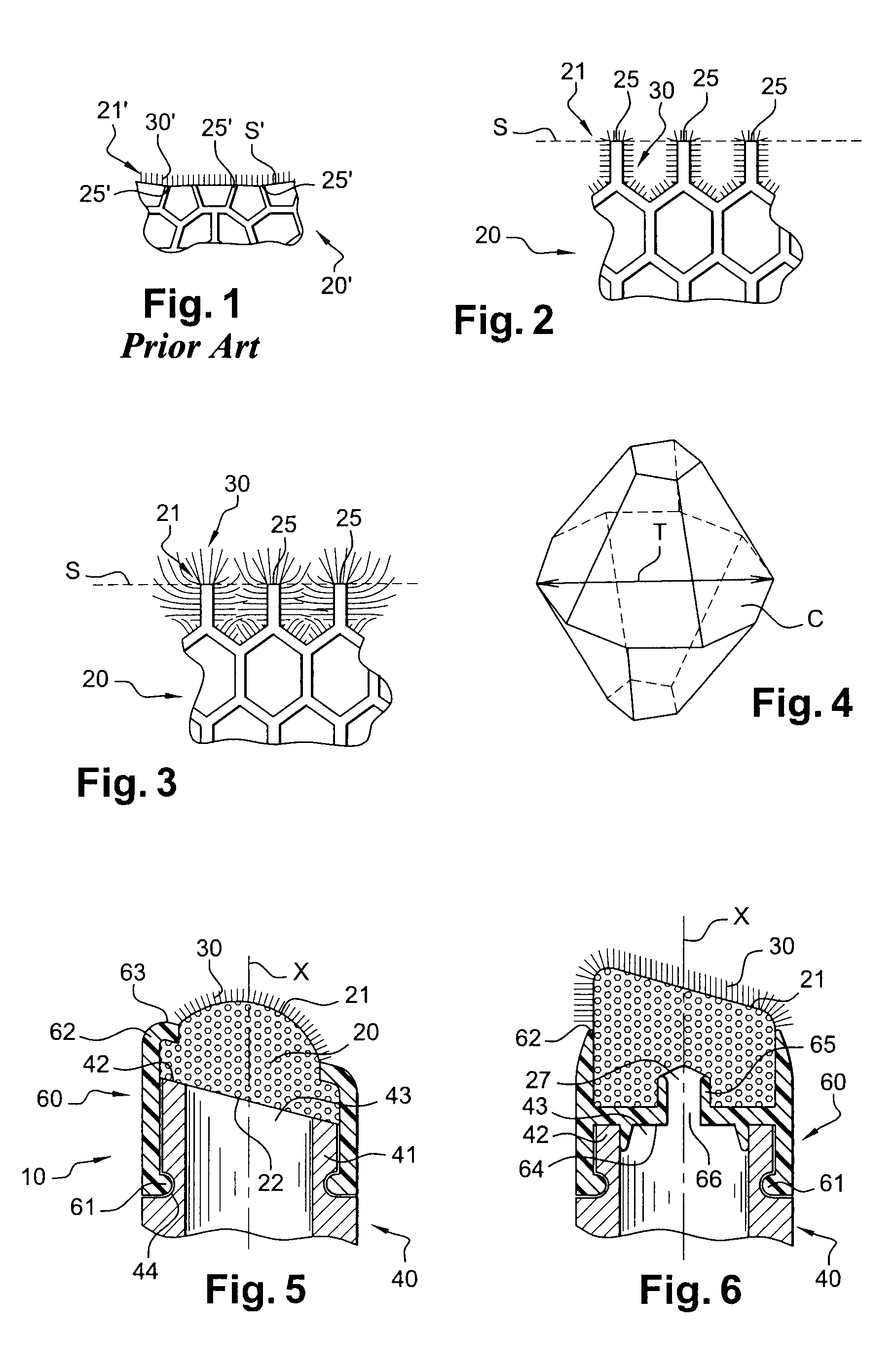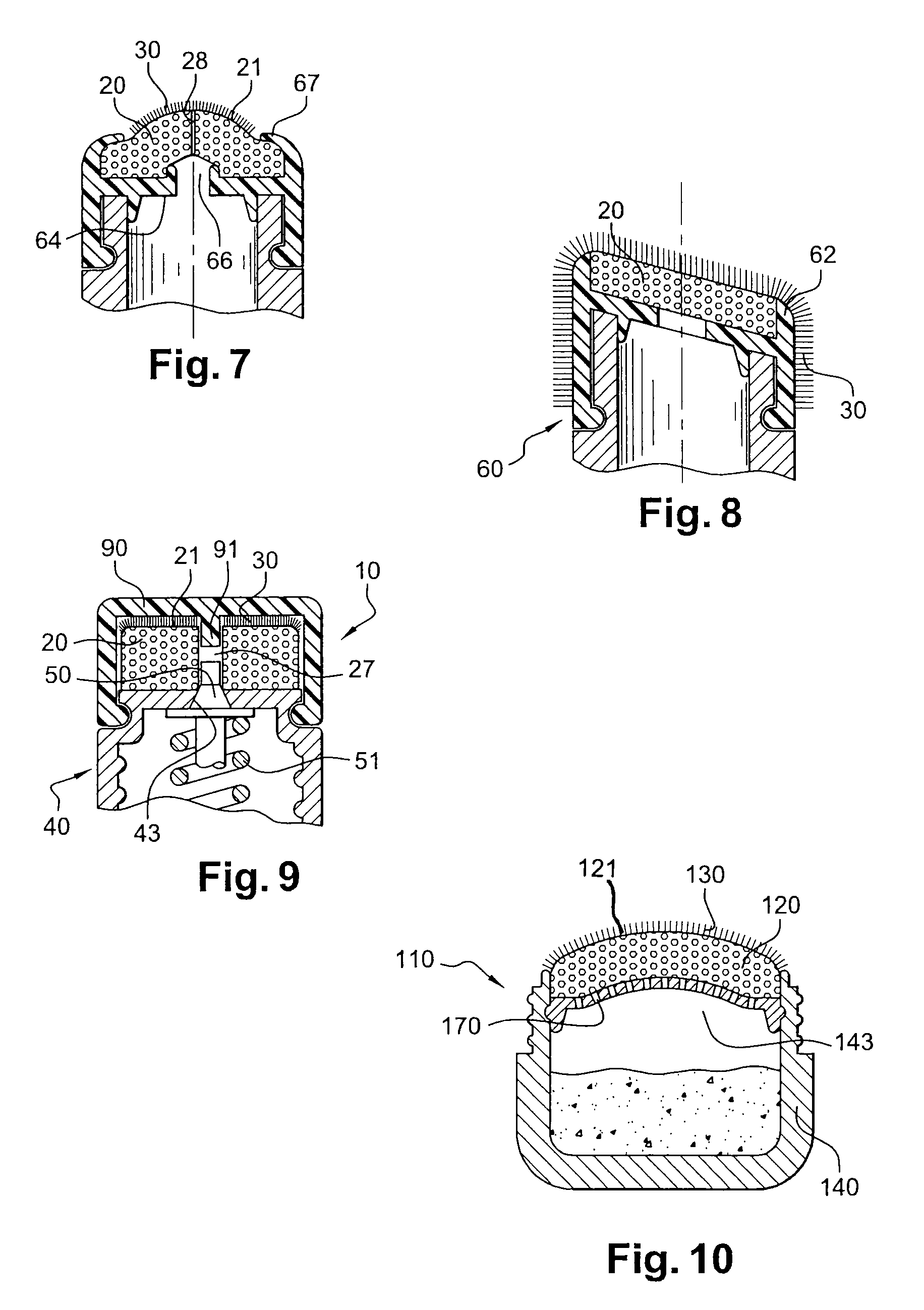Product applicator, in particular for cosmetics
a product application and product technology, applied in the field of cosmetic products, can solve the problems of product not being released and the type not enabling the product to be used
- Summary
- Abstract
- Description
- Claims
- Application Information
AI Technical Summary
Benefits of technology
Problems solved by technology
Method used
Image
Examples
Embodiment Construction
[0038]In particular, FIG. 1 shows the cells of a foam material forming an applicator according to the prior art, that is a foam material 20′ having cells of relatively small size. The foam 20′ includes cells which open onto an application face 21′ via at least one emergent edge 25′. The application face 21′ is covered in a flock coating 30′. As the cells are relatively small, the flocking adhesive is applied in film form by forming a surface S′ passing over the emergent edges 25′. The fibres of the flock coating are then set on a surface corresponding to the envelope surface S′ of the application face containing the emergent edges 25′ of the cells, so that the flock coating blocks the cells, as can be seen in FIG. 1. In addition, all of the fibres are perpendicular to the application face 21′.
[0039]FIGS. 2 and 3 illustrate the cells of a foam material forming an applicator according to the invention, i.e. a foam material 20 having cells of relatively large size. The foam 20 includes...
PUM
 Login to View More
Login to View More Abstract
Description
Claims
Application Information
 Login to View More
Login to View More - R&D
- Intellectual Property
- Life Sciences
- Materials
- Tech Scout
- Unparalleled Data Quality
- Higher Quality Content
- 60% Fewer Hallucinations
Browse by: Latest US Patents, China's latest patents, Technical Efficacy Thesaurus, Application Domain, Technology Topic, Popular Technical Reports.
© 2025 PatSnap. All rights reserved.Legal|Privacy policy|Modern Slavery Act Transparency Statement|Sitemap|About US| Contact US: help@patsnap.com



